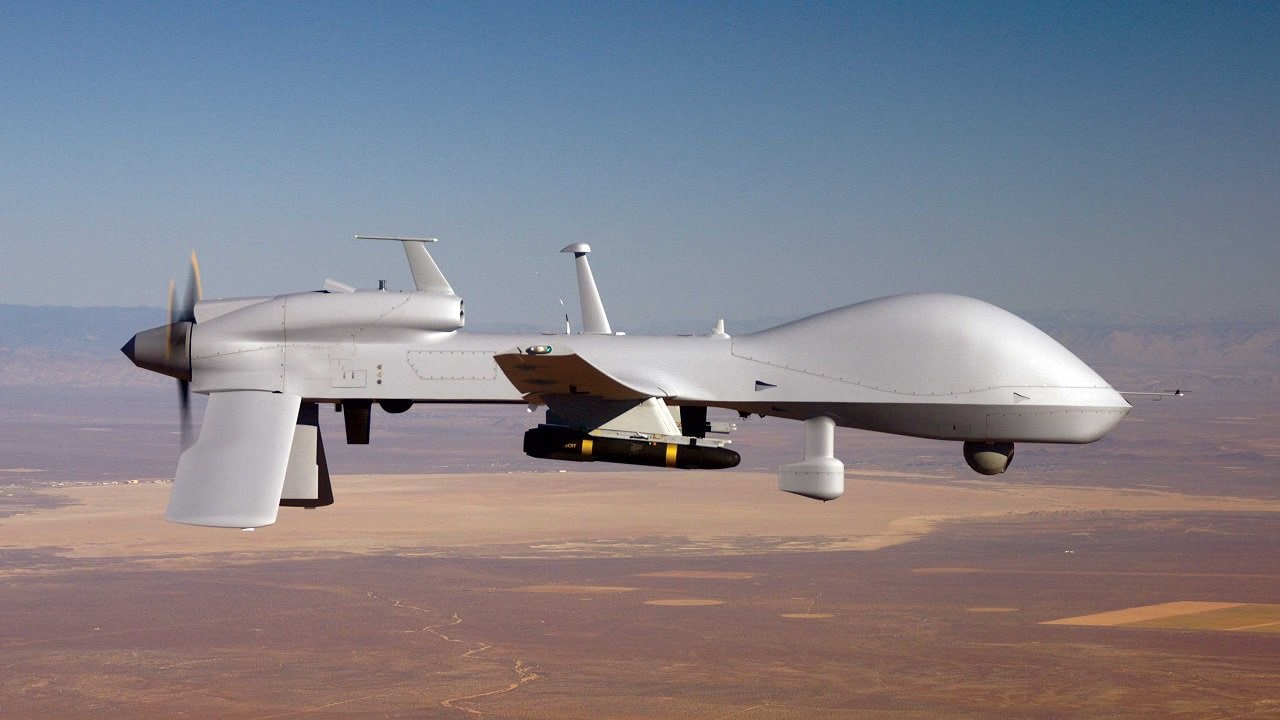Harrison Kass

The Biden administration, in ongoing efforts to aid Ukrainian forces, intends to sell Ukraine four MQ-1C Gray Eagle drones. The sale is not final. Congress can still intervene – or the Pentagon could reverse course – but as of now, the deal has forward momentum. The Biden administration is expected to notify Congress, and also make a public announcement of the deal, in the coming days.
MQ-1C – Breaking Down the Sale
A portion of the $40 billion Ukraine Security Assistance Initiative (USAI), which Congress passed last month, has been earmarked to fund the drone sale and the training Ukrainian forces will require to operate the new drones. The USAI passed through the House of Representatives with a vote of 368-57. Notably, the only ‘nay’ votes came from the GOP; Each and every DNC Rep voted in favor of the bill. Similarly, the bill enjoyed unanimous DNC support in the Senate, where it passed on a vote of 86 to 11. The specifics of what would be included in the massive $40 billion aid package were, and are, murky. But now, the potential Gray Eagle sale sheds light on a small portion of how the USAI funds will be allocated.
To date, the Ukrainians have used only smaller, shorter-range drone systems – the AeroVironment RQ-20 Puma AE and the Bayraktar-TB2. Procuring the Gray Eagle would offer Ukraine a significant boost in war fighting capabilities; the Gray Eagle is simply a better weapons system than anything currently in the Ukrainian drone inventory.
Developing the MQ-1C Gray Eagle
Developed by General Atomics, the Gray Eagle is a medium-altitude, long-endurance (MALE) unmanned aircraft system. The drone was introduced in 2009 as an upgrade over the more widely recognized MQ-1 Predator. The Gray Eagle has an increased wingspan (56 feet) and relies upon a Thielert Centurion 1.7 Heavy Fuel Engine (HFE). The HFE is a diesel engine that burns jet fuel – which results in improved performance at high altitudes. The Gray Eagle can sustain operations for up to 36 hours, at 25,000 foot altitudes, within a range of 200 nautical miles. When needed, external fuel tanks can be added, boosting the Gray Eagle’s endurance to 50 hours.
The Gray Eagle can handle a payload of 800 pounds, including AGM-114 Hellfire missiles or the GBU-44/B Viper Strike guided bombs. The Hellfire is a vaunted air-to-ground missile, costing $150,000 per unit. The Gray Eagle can carry eight Hellfires at once. Initially developed as an anti-armor weapon, the Hellfire has been modified to suit various purposes – including the destruction of “high-value targets.” Today, the Hellfire is the U.S. military’s primary air-to-ground weapon, and can be launched from air, sea, and ground platforms.
In addition to Hellfires and GBUs, the Gray Eagle can also be outfitted with electronic weapons; In 2013 Raytheon introduced NERO electronic payloads for the Gray Eagle, which included the ability to jam enemy communications. Outfitting the Gray Eagle with NERO is understood to reduce risk and operating costs.
To track targets, the Gray Eagle relies on a synthetic aperture radar/ground moving target indicator (SAR/GMTI) and an AN/AAS-52 Multi-spectral Targeting System (MTS). The drone has proven itself reliable at engaging targets and gathering intelligence.
The U.S. Army has enjoyed a successful operational history with the MQ-1C Gray Eagle, deploying the drone over Iraq, Afghanistan, and elsewhere. If the Gray Eagle sale earns Congressional approval, the Ukrainians will be receiving a proven drone, capable of confronting the Russians with impressive firepower.
No comments:
Post a Comment